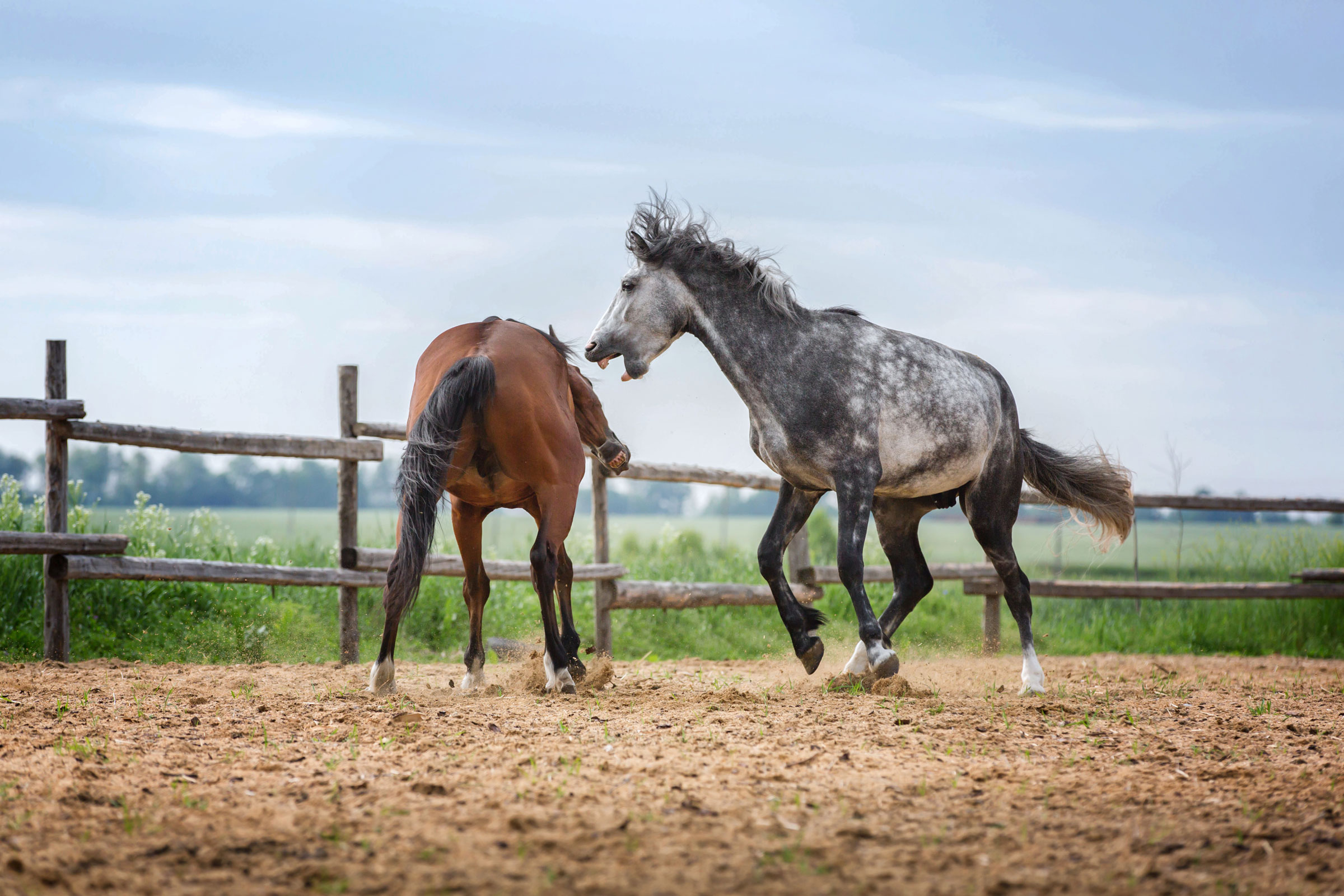
Horses are like people—some just have quirky behaviors. Horses can’t verbalize a physical problem, so it’s important to determine if horse’s peculiar behavior is simply an idiosyncrasy or an issue that requires care.
Carissa Wickens, PhD, an assistant professor and state extension horse specialist at the University of Florida, uses one of the school’s stallions as an example. The stud, a former hunter show horse, acts weird when turned out, she explained.
“We tend to think of stallions liking to be out more than in a stall,” she said. “Because he’d been raised in a barn, he’s not used to dealing with the humidity and pests and is more comfortable inside.”
For this horse, and others who don’t like the bugs, providing a stall with a connected paddock blends access to the outdoors with a refuge from the elements. The solution might not always be as straightforward.
It’s always wise to schedule a visit with your horse’s veterinarian to rule out medical problems—especially in horses that begin displaying an odd behavior they’ve never exhibited before. Once physical problems are ruled out or diagnosed and treated, it’s helpful to look at the larger picture. The horse might need additional training or a change in his living environment.
For example, some studies show that white noise, especially country music or classical music (as long as it’s not in the minor keys), helps relax stalled horses, according to Wickens. Another common approach is feeding supplements with tryptophan and herbal extracts purported to having calming effects.
“The jury is very much out on the effectiveness of these products,” Wickens said.
“People want a quick fix and by throwing the ‘kitchen sink’ at the horse by adding supplements, changing his diet and getting a saddle fitter out,” she said. “If you do all those things simultaneously you’ll never know what is working.”
Instead, she recommends trying one thing at a time for at least two weeks before adding or changing something else.


